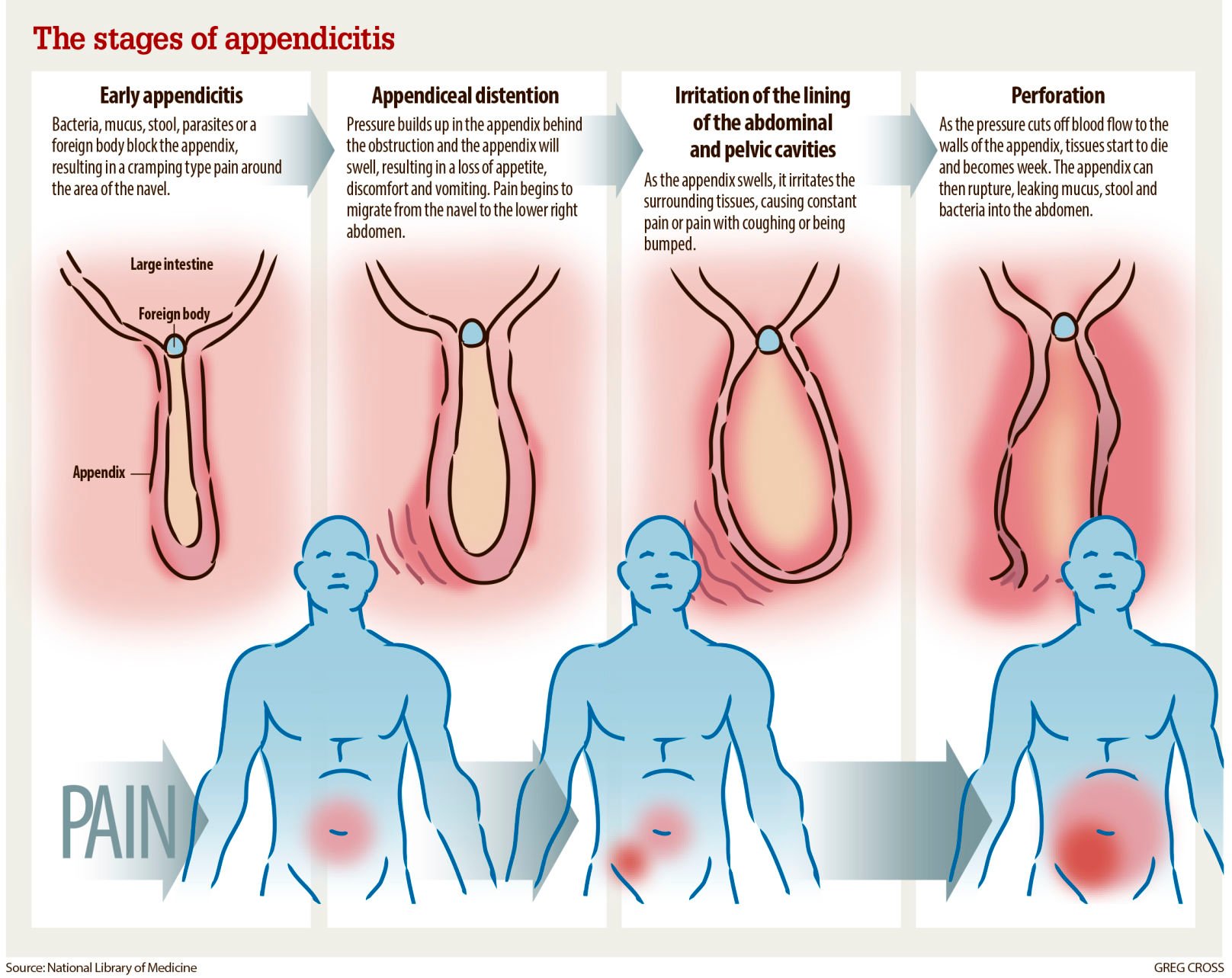

It is best to give him nothing by mouth, and because of the danger of aggravating the condition and possibly causing rupture of the appendix, cathartics and laxatives are contraindicated. The patient should lie down and remain as quiet as possible. When appendicitis is suspected because of symptoms exhibited by the patient, a health care provider should be notified immediately. In women, there is the possibility of a ruptured ectopic pregnancy, a twisted ovarian cyst, or a hemorrhaging ovarian follicle at the middle of the menstrual cycle. The onset of pneumonia, rheumatic fever, or diabetic ketoacidosis can imitate appendicitis. Other diseases that can be mistaken for appendicitis are gallbladder attacks and kidney infection on the right side. A white cell count higher than 20,000 per mm 3 suggests a ruptured appendix and peritonitis. Mild leukocytosis of 14,000 to 16,000 per mm 3 is common. An elevated white cell count (leukocytosis) commonly accompanies appendicitis as it does other kinds of inflammation. Other data that may support a diagnosis of appendicitis are obtained through a blood cell count. The patient also can feel pain in the area of the appendix when either a rectal or pelvic examination is done. Rebound pain occurs when the abdomen is deeply palpated and the hand is quickly removed from the abdomen.

The pain is persistent and is aggravated by motion, causing the patient to bend over and tense the abdominal muscles (muscle guarding). The pain typically begins in the umbilical region and eventually localizes in the right lower quadrant of the abdomen over the site of the appendix. The classic symptoms of appendicitis are pain, nausea, vomiting, and low-grade fever in adults.


 0 kommentar(er)
0 kommentar(er)
